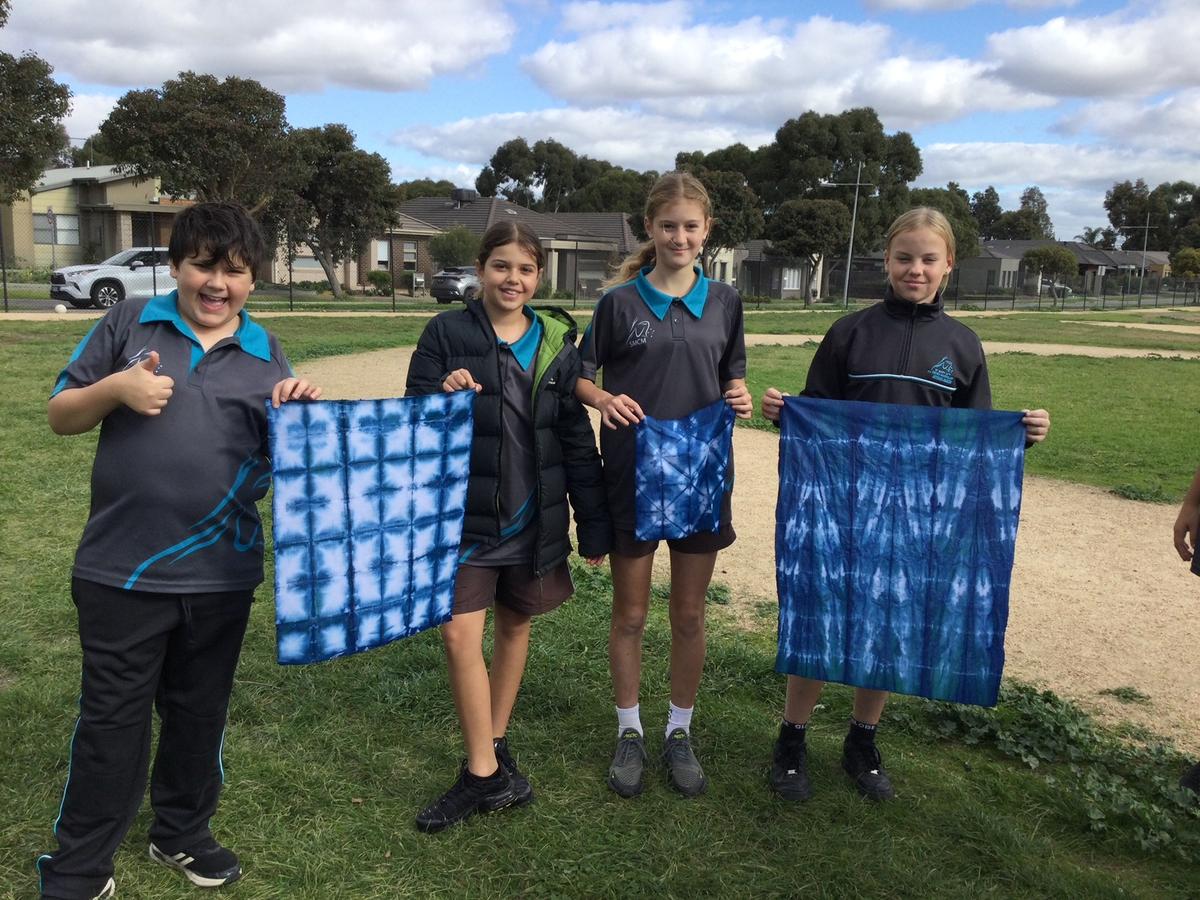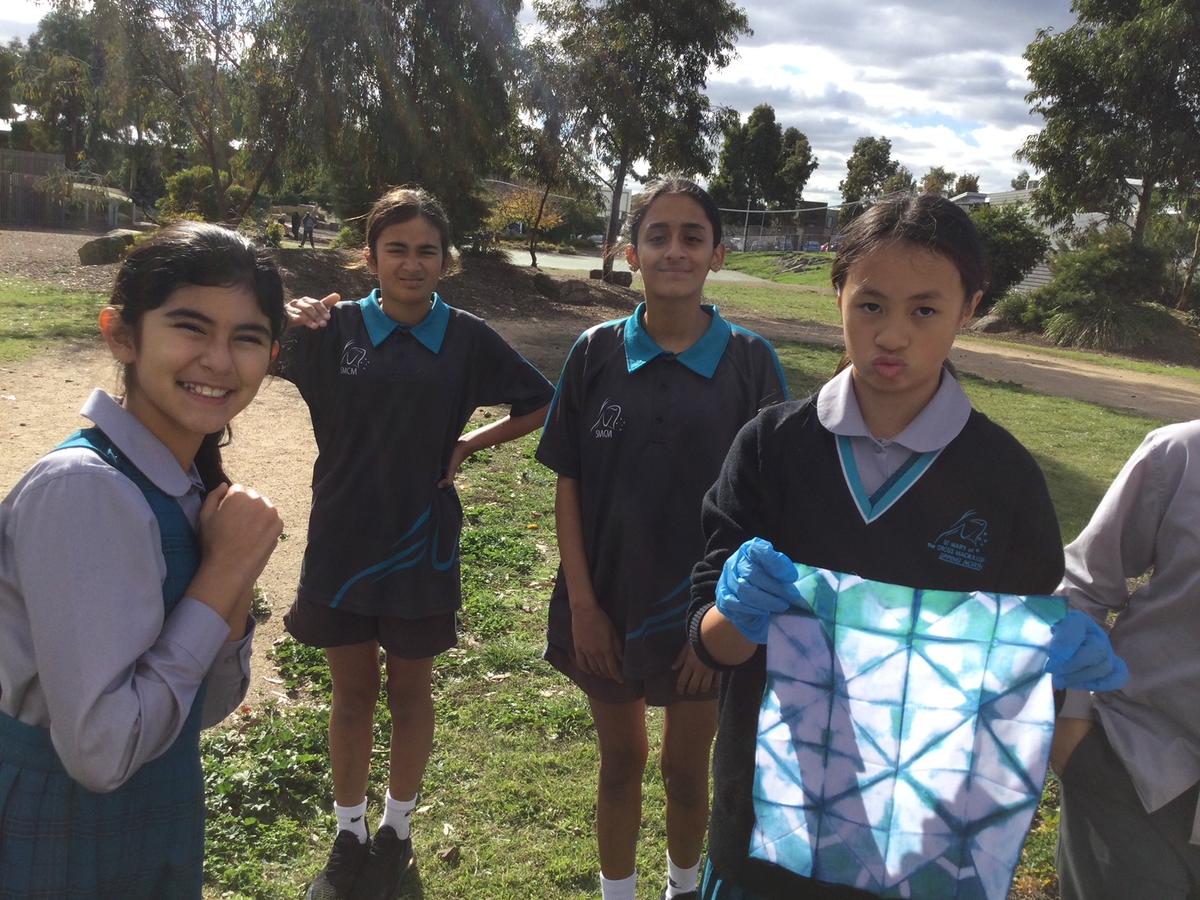Learning and Teaching

Japanese Shibori Lessons
As an extension of learning about the SDGs (Sustainable Development Goals), Year 6s experienced Shibori, the traditional Japanese tie-dye technique, using natural dyes extracted from plants. Shibori is a manual dyeing technique used on textiles to create patterns that spread unevenly across the fabric. Did you know that Shibori stretches over 1300 years? Fortunately, it is still recognised as an important aspect of Japanese art today.
Our students experimented with various techniques to create a range of patterns as you can see in the images below.
Well done, Year 6s!
Yumi
Japanese Teacher
Word of the Week
2024 Reporting Update: Mathematics Version 2.0
As educational standards evolve, curriculum authorities undertake reviews to refine school curricula to meet student needs. Thus far in Victoria, we have had:
- Curriculum and Standards Framework (CSF) (1995)
- CSF II (2000)
- Victorian Essential Learning Standards (VELS) (2005)
- Australian VELS, also known as AusVELS (2013)
Currently, we have the Victorian Curriculum, which was established in 2017.
Recently, the Victorian Curriculum and Assessment Authority (VCAA) has undertaken a revision of the Mathematics curriculum, leading to Mathematics Version 2.0. This updated version is set to be implemented across all Victorian schools by either 2024 or 2025.
At SMCM, we have adopted the new Mathematics 2.0 curriculum from the beginning of this year.
A notable change in this revision is the reorganisation of Mathematics strands as outlined below:
| Mathematics 1.0 | Mathematics 2.0 |
|---|---|
| Three Mathematics strands | Six Mathematics strands |
| P-6: Number and Algebra | P-6: Number |
| P-6: Algebra | |
| P-6: Measurement and Geometry | P-6: Measurement |
| P-6: Space | |
| P-6: Statistics and Probability | P-6: Statistics |
| 3-6: Probability (now commencing from Year 3) |
This year, despite using the 2.0 Mathematics curriculum, the reporting format will remain unchanged. However, it’s important to note that there have been revisions to the standards. Some expectations that were previously categorised as Level 2 may now align with Level 1 standards (or vice versa). As a result, teachers have had to reassess student performance against these updated standards.
Please be aware that our teaching staff are also navigating these changes, too.
In specific year levels, your child may not receive a score for a strand in Mathematics (E.g., Statistics and Probability). This could be due to our planned coverage of these strands in Semester 2 or the revised curriculum, where Probability is introduced starting from Year 3 onwards.
We appreciate your understanding during this significant curriculum transition. Should you have any inquiries regarding your child’s report, please do not hesitate to contact Rafael using the provided contact details.
Warm regards,
Rafael
Learning & Teaching and Digital Technologies Leader
Rafael.Fernandez@smcmeppingnth.catholic.edu.au
Allison
Science of Learning and Literacy Leader
Allison.Luff@smcmeppingnth.catholic.edu.au
Sawako & Rachel
Mathematics Leaders










